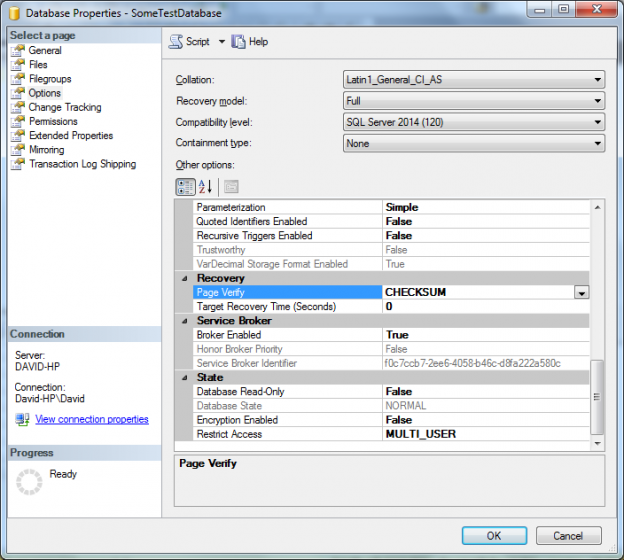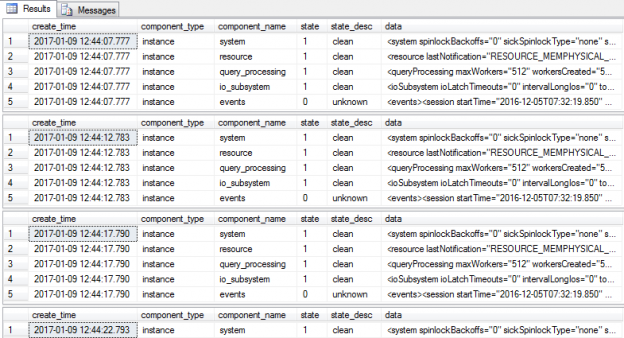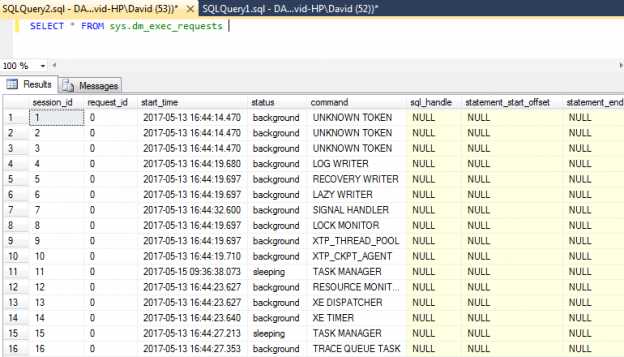In my last post, Monitoring SQL Server with dynamic management objects – Sessions and connections, I introduced the concept of using T-SQL queries to monitor SQL Server using Dynamic Management Views. The article demonstrated how we can use two views, namely sys.dm_exec_sessions and sys.dm_exec_connections to view activity on our instance of SQL Server and we achieved this by utilising some of the functionality available to us within T-SQL like joins, aliases and functions, all of which helped us develop a query to return monitoring information to us.
Read more »David Alcock
- Monitoring SQL Server with Dynamic Management Objects – Requests - May 17, 2017
- Monitoring SQL Server with Dynamic Management Objects – Sessions and connections - May 12, 2017
- CHECKSUM page verification in SQL Server - March 21, 2017

Monitoring SQL Server with Dynamic Management Objects – Sessions and connections
May 12, 2017A fundamental task of Database Administrators is monitoring SQL Server performance. Whilst SQL Server does give us a user interface inside management studio that enables us to view current activity (in the rather aptly named Activity Monitor) this article is going to focus on querying Dynamic Management Objects with T-SQL to return various pieces of useful process information that we can use to monitor server usage.
Read more »
CHECKSUM page verification in SQL Server
March 21, 2017CHECKSUM is an option for page verification that is available at the database instance level and we can see what level of verification each of our databases are currently using by the following query:
Read more »
SQL Server Buffer Pool in action
March 9, 2017SQL Server retrieves data from two areas; memory and disk. As disk operations are more expensive in terms of IO which means they are much slower SQL stores and retrieves data pages from an area known as the Buffer Pool where operations are much faster.
Read more »
Monitoring Memory Clerk and Buffer Pool Allocations in SQL Server
February 20, 2017The following article applies to SQL Server versions 2008 +
Adequate memory is one of the most important factors for a well-functioning instance of SQL Server. By design SQL Server manages its own memory allocations via the SQLOS rather than having the servers Operating System perform this task.
Read more »
Using sp_server_diagnostics
January 19, 2017Troubleshooting SQL Server is all about gathering the right evidence. Ordinarily we utilise a variety of different methods and analyse their output to look for specific areas where we would focus our diagnostic efforts. We could for example, use the results of various DMVs to look at wait statistic and resource information to help us focus our investigation in a particular area of SQL Server.
Read more »